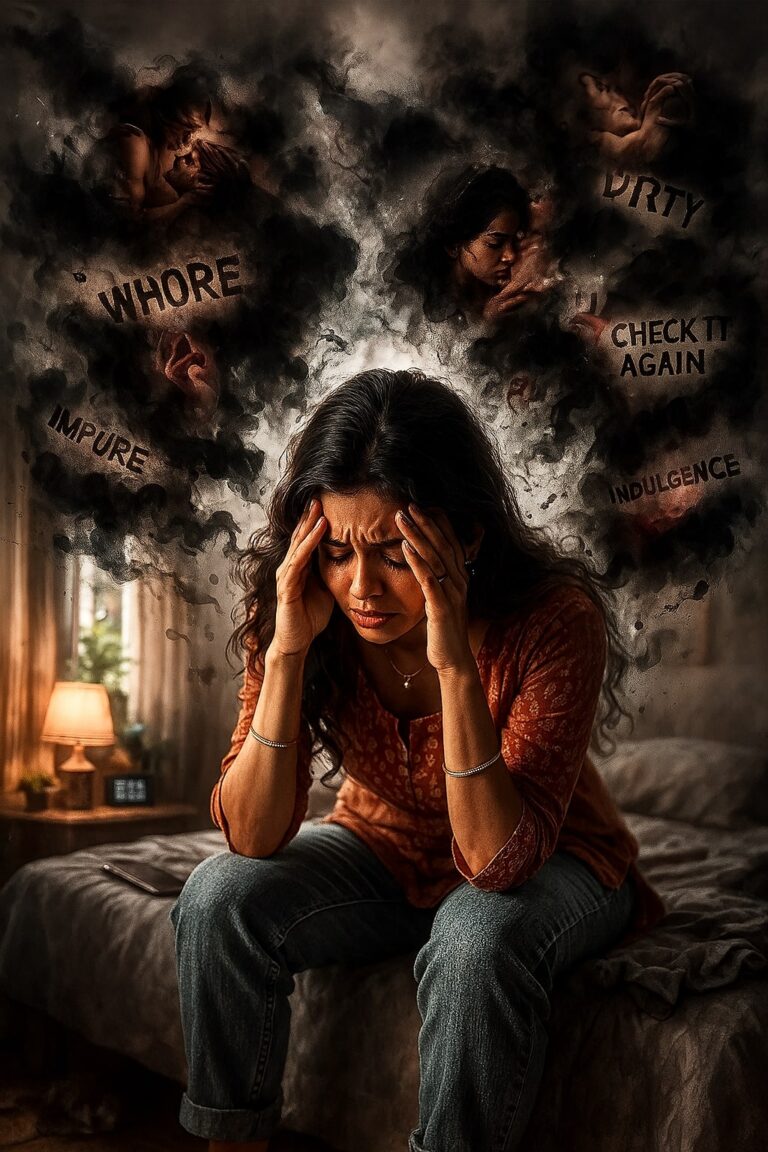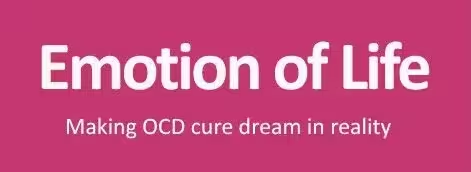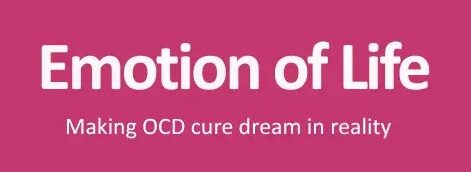Sexual Intrusive Thoughts OCD

Sexual Intrusive Thoughts OCD
Sexual Intrusive Thoughts OCD is a often misunderstood and highly distressing type of obsessive-compulsive disorder. Individuals affected by this condition face unwanted, troubling sexual thoughts that clash with their values, identity, or personal boundaries. These intrusive thoughts can involve inappropriate scenarios, taboo subjects, or fears of engaging in behaviors that deeply unsettle them. Due to the shame and unacceptability associated with these thoughts, many choose to remain silent, resulting in isolation and significant emotional distress. It’s important to understand that Sexual Intrusive Thoughts OCD does not reflect a person’s genuine sexual desires or character. Rather, it is an anxiety disorder in which the mind fixates on fears and uncertainties, leading to obsessive thoughts and compulsive actions. Terms like intrusive sexual thoughts, sexual OCD, and taboo obsessions can be confusing, but it’s crucial to recognize that these thoughts are ego-dystonic, meaning they contradict what the individual truly wants or believes. This clash generates guilt, panic, and incessant checking behaviors. Sexual Intrusive Thoughts OCD, commonly called Sexual OCD, is a subtype of obsessive-compulsive disorder marked by recurring, unwanted, and distressing sexual thoughts or images. These intrusive thoughts come unexpectedly, without the individual’s consent, and typically provoke strong emotional responses like fear, disgust, or guilt. Unlike normal sexual thoughts or fantasies, these intrusive ones induce panic because they are at odds with the person’s values or self-perception. For someone dealing with sexual intrusive thoughts OCD, the situation can feel daunting. They may grapple with their morality, fear being a threat to others, or believe that these thoughts signify something “real” about them. However, the essential insight for comprehending and managing sexual intrusive Thoughts OCD is understanding that thoughts do not equate to intentions or actions. With effective therapy, emotional support, and structured recovery strategies, individuals can break free from the cycle of obsessions and compulsions.
Sexual Intrusive Thoughts OCD Symptoms and Treatment
Sexual Intrusive Thoughts OCD For instance, someone with Sexual Intrusive Thoughts OCD might repeatedly question themselves with thoughts such as:
– “What if I’m attracted to a family member?”
– “What if I act inappropriately around children?”
– “What if I secretly desire something taboo or harmful?”
These fears do not reflect genuine desires. Instead, they exemplify the OCD cycle of obsession and compulsion, where the disturbing thought constitutes the obsession, and the compulsion typically manifests as seeking mental reassurance, excessive checking, evasion of certain individuals or locations, or confiding in others for relief.
Common Symptoms of Sexual Intrusive Thoughts OCD
Individuals with sexual intrusive thoughts OCD face persistent obsessions that incite significant anxiety, leading to compulsive behaviors designed to alleviate those fears, rather than merely occasional unwanted ideas.
Typical symptoms include:
- Frequent, unwelcome sexual thoughts involving taboo scenarios.
- Overthinking feelings to “verify” whether attraction is present.
- Avoiding interactions with children, family, or colleagues due to fears of losing control.
- Seeking constant reassurance from loved ones or frequently confessing thoughts.
- Experiencing intense shame and guilt, resulting in withdrawal from social or intimate relationships.
What makes these symptoms particularly challenging is their direct assault on the individual’s beliefs and identity. For instance, someone who prioritizes morality may obsessively worry about harming others, while another who values loyalty might fixate on infidelity, despite having no desire for it. This disconnect between thoughts and reality is characteristic of OCD and does not reflect the person’s true character.
Why Sexual Intrusive Thoughts OCD is so distressing?
Sexual intrusive thoughts OCD is among the most distressing types of OCD due to its personal and taboo nature. While thoughts related to contamination, symmetry, or checking can be difficult, they are often easier to discuss. In contrast, sexual intrusive thoughts can feel unspeakable, creating fear of judgment or misunderstanding when shared. This need for secrecy can exacerbate the cycle; the more someone tries to suppress these thoughts, the more powerfully they return, a phenomenon known as thought suppression. The anxiety of “what if this says something about me” leads people to constantly scrutinize their minds, analyze their feelings, or avoid any triggers.
Additionally, distress results from a phenomenon called fusion of thought and action, where individuals mistakenly equate having a thought with the moral wrongdoing of acting on it. For example, the thought “What if I harm someone sexually?” can feel just as frightening as the actual act, despite a lack of intention. This flawed reasoning intensifies the pain and confusion associated with the OCD cycle.
Causes and Risk Factors of Sexual Intrusive Thoughts OCD
Similar to other types of OCD, Sexual Intrusive Thoughts OCD arises from a combination of psychological, and environmental influences rather than a single cause.
- Personality Traits: Those with perfectionistic characteristics, elevated moral standards, or a strong sense of responsibility may internalize intrusive sexual thoughts more intensely, viewing them as signs of personal failure.
- Trauma and Experiences: Previous strict upbringing, exposure to cultural or religious taboos, or unrelated traumatic experiences can increase sensitivity to intrusive thoughts.
- Environmental Stressors: Significant life changes, stress, or a lack of emotional support can trigger the onset or exacerbation of sexual intrusive thoughts OCD.
How Sexual Intrusive Thoughts OCD Affects Daily Life and Relationships?
Sexual intruisve thoughts OCD can significantly impact nearly every aspect of life. Many individuals with this condition may avoid social events, family gatherings, or professional situations due to their fears, and may even distance themselves from children, partners, or coworkers to avert potential triggers. Romantic relationships can suffer as well; a person dealing with sexual intruisve thoughts OCD may question their attraction to their partner or fear infidelity, despite feeling deep love and commitment. This can lead to unnecessary conflict and emotional detachment. In the workplace, ongoing mental checking and anxiety can impair concentration and reduce productivity. The emotional toll of shame, guilt, and secrecy can lead to isolation and, in some cases, depression. Over time, individuals may begin to identify more with their sexual intruisve thoughts OCD rather than their genuine strengths and values, which can further harm their self-esteem.
The Distinction Between Sexual Intrusive Thoughts OCD and Authentic Desires
An important part of recovery is recognizing that intrusive sexual thoughts differ from true desires. These thoughts are ego-dystonic, meaning they are troubling, unacceptable, and clash with a person’s values. In contrast, authentic desires are ego-syntonic, they fit with an individual’s identity and evoke comfort instead of anxiety.
For instance, a person with Sexual intrusive thoughts OCD may feel a surge of panic when they experience an intrusive thought about sexually harming someone. Their instinctive response is fear, aversion, and avoidance, clear indicators that the thought does not define them. The distress felt in response to the thought serves as evidence that it does not align with reality. Understanding this distinction is empowering, as it helps individuals dissociate thoughts from actions and view them as mere mental noise produced by OCD.
Treatment for Sexual Intrusive Thoughts OCD
Addressing Sexual Intrusive Thoughts OCD is very effective when employing a structured approach that integrates therapeutic techniques, wellness strategies, and emotional healing. The objective is not only to alleviate symptoms but also to rebuild self-trust and long-term resilience.
Cognitive Behavioral Therapy (CBT): CBT assists individuals in recognizing and challenging distorted beliefs, such as the notion that “having a bad thought signifies I am a bad person.” Through cognitive restructuring exercises, individuals learn to distinguish thoughts from their identity and replace fear-based beliefs with more realistic viewpoints. For example, someone who feels panicked after encountering a disturbing thought comes to understand it as just a random mental occurrence, rather than a reflection of their true self.
Exposure and Response Prevention (ERP): ERP is widely regarded as the leading treatment for OCD. When applied to Sexual intrusive thoughts OCD, ERP entails gradually confronting triggers of intrusive thoughts (such as being in the company of children or partners without avoidance) while resisting compulsive behaviors like seeking reassurance or avoiding situations. With time, anxiety diminishes, and the individual learns that the feared outcomes do not materialize.
Acceptance and Commitment Therapy (ACT): ACT encourages individuals to cease fighting against sexual intrusive thoughts OCD and instead accept their existence without assigning them significance. By practicing mindfulness and focusing on values-driven living, individuals learn to prioritize what genuinely matters instead of continuously battling OCD. For instance, rather than scrutinizing each intrusive thought, one emphasizes being a caring parent, partner, or professional.
Wellness Coaching: In addition to formal therapy, wellness coaching is crucial in the recovery process. It promotes the development of daily habits that enhance mental and emotional well-being. Activities like mindfulness meditation, journaling, physical exercise, and maintaining good sleep hygiene bolster resilience and serve as protective factors against relapse.
Personality Dynamics course-correction: Personality traits such as perfectionism, fear of judgment, and an increased sense of responsibility often exacerbate Sexual OCD. Therapy aims to address these traits by helping individuals establish healthy boundaries, develop flexibility, and enhance self-trust. Improving emotional intelligence and learning to manage feelings can also lessen the intensity of intrusive thoughts.
Developing Healthy Coping Mechanisms: Examples of effective coping strategies include employing grounding techniques during bouts of intrusive thoughts, practicing self-compassion to alleviate guilt, and designating specific “worry time” to minimize constant rumination. Over time, these approaches can replace harmful compulsions and foster a more balanced emotional life.
Self-Help Approaches for Coping with Sexual Intrusive Thoughts OCD
While seeking professional therapy is crucial, individuals can also enhance their recovery through self-help techniques. By understanding that intrusive thoughts are merely insignificant mental occurrences, practicing mindfulness to remain present, and discussing their feelings with trusted therapists or support groups, individuals can alleviate feelings of shame and isolation. Documenting sexual intrusive thoughts without self-judgment and then moving on can help diminish their intensity.
Additionally, confronting avoidance behaviors is key. Participating in regular activities, spending time with loved ones, and gradually rebuilding social confidence can help dismantle the barriers created by OCD. When therapy is complemented by self-help strategies, recovery becomes not only achievable but also sustainable.
SUCCESS STORY – I
Reena, a 26-year-old woman, had been silently struggling for years with disturbing intrusive sexual thoughts. These thoughts were completely against her values and beliefs, and she constantly worried that having them meant something was wrong with her character. She started avoiding social gatherings, feared being alone with friends, and even distanced herself from her own family. The guilt and shame became unbearable, and her mental health deteriorated.
When Reena reached Mr. Shyam Gupta at Emotion of Life, she was terrified of sharing her symptoms openly, but with a safe and non-judgmental environment, she slowly opened up. Her therapy began with CBT to help her understand that thoughts are not facts. Through ERP, she learned to face her triggers such as watching a movie scene or being around people without engaging in avoidance or compulsive reassurance. ACT helped Reena accept that thoughts will come and go, but they don’t define her. Alongside therapy, we integrated wellness coaching, focusing on building self-compassion, journaling, and grounding exercises. She also worked on personality dynamics course correction by identifying her tendency toward perfectionism and guilt, slowly replacing it with healthier coping strategies.
After several months of consistent therapy, Reena reported a remarkable shift. The intrusive thoughts still appeared occasionally, but they no longer controlled her. She had learned to let them pass without fear, shame, or compulsions. Today, Reena describes herself as “finally free to live life on her own terms,” enjoying relationships and reclaiming her confidence.
SUCCESS STORY – II
Ajay, a 32-year-old professional, came to Emotion of Life after suffering silently with Sexual Intrusive Thoughts OCD for nearly a decade. His mind would be flooded with disturbing sexual images, sometimes involving inappropriate contexts that horrified him. He feared he might act on them, even though he never had and never wanted to. This constant battle left him anxious, withdrawn, and doubting his identity.
In therapy, Ajay learned that these intrusive thoughts were not unique to him and did not reflect his true desires. Through ERP sessions, he gradually exposed himself to situations he feared, like interacting with colleagues or spending time with his nieces and nephews, without resorting to avoidance or checking behaviors. CBT techniques helped him challenge the distorted beliefs that his thoughts meant something about who he was. With ACT, Ajay learned to observe his thoughts with distance instead of wrestling with them. At the same time, wellness coaching and emotional health practices like mindfulness, meditation, and gratitude journaling were incorporated into his routine. Ajay also worked on developing healthy coping mechanisms, such as channeling his stress into exercise and creative hobbies instead of rumination.
Over time, Ajay’s life transformed. He no longer feared being defined by his thoughts. Instead, he learned to measure himself by his actions, values, and character. Today, Ajay describes himself as “living proof that OCD can be managed and life can be beautiful again.” His confidence, relationships, and professional life have flourished, and he continues to practice the skills he learned in therapy.
- Is having sexual intrusive thoughts normal?
Intrusive thoughts are common in everyone, but when they become persistent, disturbing, and start interfering with daily life, they may indicate Sexual Intrusive Thoughts OCD. The difference lies in how a person reacts to them, people with OCD fear and obsess over the thoughts.
- Does Sexual Intrusive Thoughts OCD mean I want these thoughts?
No. Having Sexual Intrusive Thoughts OCD does not mean you desire or agree with the thoughts. They are unwanted and often the opposite of what you truly value, which is why they cause such distress.
- What triggers sexual intrusive thoughts in OCD?
Triggers can include stress, hormonal changes, anxiety, exposure to sexual content, or even random daily experiences. For people with OCD, these triggers activate obsessive thinking and compulsions like checking, avoiding, or seeking reassurance.
- Is Sexual Intrusive Thoughts OCD curable?
While OCD is considered a chronic condition, Sexual Intrusive Thoughts OCD can be managed effectively. With therapy, wellness practices, and coping strategies at Emotion of life, people can live free from the distress and regain emotional balance.
- Can children or teenagers experience Sexual Intrusive Thoughts OCD?
Yes. Adolescents and even children may experience intrusive thoughts of a sexual nature. It is important for parents and caregivers to approach this with sensitivity and seek professional help rather than shaming or dismissing the child.
CONCLUSION
Dealing with Sexual Intrusive Thoughts OCD can be distressing and isolating, but it’s crucial to understand that these thoughts do not define one’s identity. They are symptoms of OCD and not indicative of personal values or desires. With appropriate treatment methods such as CBT, ERP, ACT, wellness coaching, and emotional healing, recovery is not only attainable but can be lasting. By embracing uncertainty, developing healthier coping mechanisms, and aligning life with personal values, individuals can escape the cycle of intrusive thoughts and regain their peace, confidence, and emotional liberty.
Call now: +91 9368503416
Website: www.emotionoflife.in
Email: info@emotionoflife.in
Book Now. |OCD Types | Meet Our Experts | Success Stories| Contact Us|

